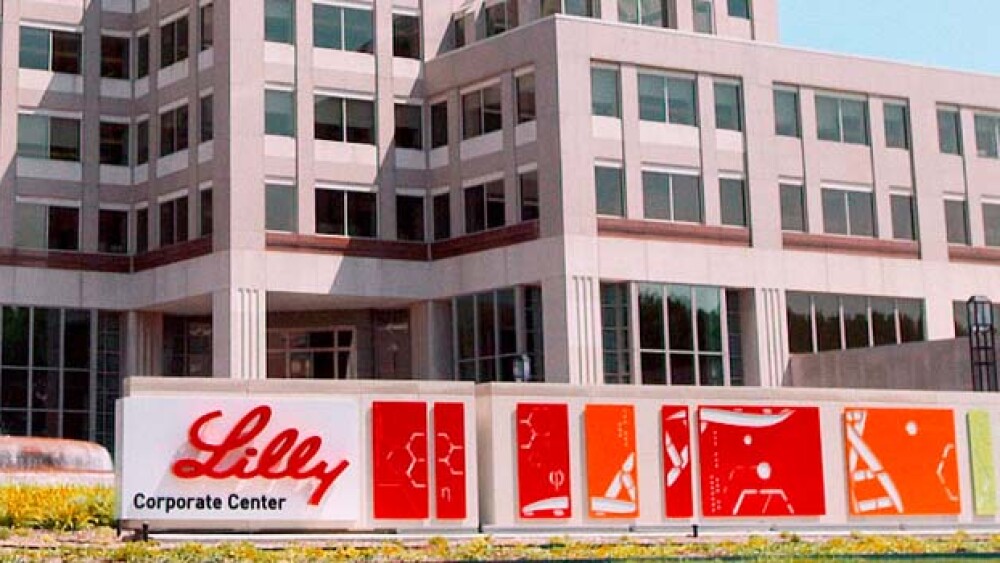Earlier this month Eli Lilly announced it will begin selling an authorized generic of Humalog that will sell for 50 percent less than the branded drug.
As government officials continue to scrutinize the high costs of many drugs, particularly the price of life-saving insulin, Indianapolis-based Eli Lilly disclosed data over the weekend that indicates the price for its lead insulin product Humalog dropped by 8 percent over the past five years.
In its disclosure, Eli Lilly said that pricing of medications is one of its biggest and most important decisions. Eli Lilly said that across its product portfolio in the United States, the average net price for medications after rebates and discounts are factored in has fallen over the past four years. The net price has declined from 59 percent of list price in 2014 to 46 percent in 2018, Eli Lilly said. Lilly specifically pointed to Humalog, which it said has dropped 8.1 percent during that time frame.
Eli Lilly included a chart for Humalog that showed the price for a month’s supply in 2014 was $147. It jumped to $159 in 2015 but then dropped to $133 in 2016. The price in 2017 ticked upwards slightly to $135 for a month’s supply, which is where the price remained in 2018, the company said.
As BioSpace previously reported, the annual cost of insulin for a type 1 diabetes patient in the U.S. has almost doubled from $2,864 in 2012 to $5,705 in 2016. In November, the American Diabetes Association published recommendations and public policy solutions to address the problem of affordable insulin. The ADA’s call-to-action was based on data that showed the average price of insulin nearly tripled between 2002 and 2013. In 2017, the ADA said that diabetes, including both Type 1 and Type 2, was the most expensive chronic illness in the U.S. The disease has a total cost of more than $327 billion per year including $15 billion for insulin, the ADA said.
The last list price increase for Humalog, according to Lilly, was in May 2017. The company said that it recognizes people struggle to pay for medications and it is committed to “finding solutions to lower out-of-pocket costs and to implement other changes that can help the U.S. health system work better for patients.”
“We strike a balance between access and affordability for patients while sustaining investments in life-changing treatments for some of today’s most serious diseases,” Lilly said in its announcement.
When it comes to diabetes, Lilly listed some of the solutions it has implemented in order to address those pricing concerns. Specifically, the company pointed to its announcement earlier in March that it will begin to sell an authorized generic version of Humalog 100, which will is expected to be sold for about 50 percent cheaper than the branded insulin. The authorized generic version of Humalog 100 will be known as Insulin Lispro and will be sold by ImClone Systems, a subsidiary of Eli Lilly.
“Insulin Lispro could make insulin more affordable for certain Americans asked to pay full retail price—or a large percentage of the retail price—out of their own pockets. That may include people in high-deductible health insurance plans, the uninsured and seniors that hit the coverage gap in their Medicare Part D plans,” Eli Lilly said.
Last year, Eli Lilly also opened its Lilly Diabetes Solution Center to assist people who need help paying for their Lilly insulin. The company said it has provided assistance to more than 10,000 people per month since the company established the center in August 2018.
Companies that develop insulin have been facing government scrutiny and lawsuits over the cost of insulin, including Eli Lilly. In October, Minnesota Attorney General Lori Swanson filed a lawsuit against three of the biggest insulin manufacturers over price gouging claims. In the lawsuit, Swanson said Eli Lilly, Sanofi and Novo Nordisk “deceptively raise the list price of insulin” and that the hikes have made the life-saving medication “less affordable.”





